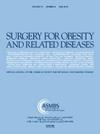机器人减肥手术使用和结果的种族差异:代谢和减肥手术认证质量改进计划 8 年数据分析。
IF 3.5
3区 医学
Q1 SURGERY
引用次数: 0
摘要
背景:机器人手术在各外科专科的使用率不断上升,但有报道称,患者在接受治疗和治疗效果方面存在种族差异:各外科专科对机器人手术的使用率一直在上升;然而,有报道称患者在获得护理和治疗结果方面存在种族差异:在这项研究中,我们考察了 8 年间机器人减肥手术在使用和结果方面的种族差异:背景:美国各地的代谢与减肥手术认证质量改进计划(MBSAQIP)卓越中心:方法:使用MBSAQIP数据库识别2015年至2022年期间接受机器人减肥手术的成年患者。根据种族和民族将患者分为非西班牙裔白人、非西班牙裔黑人或非裔美国人(AA)、土著人、亚裔和西班牙裔患者。多变量分析用于评估使用机器人手术的预测因素、轻微和严重并发症的几率、住院时间延长(住院时间延长(pLOS):≥3 天)、再入院、再次手术和 30 天内死亡率:在纳入的 1,288,359 名患者中,196,314 名患者(15.2%)使用了机器人手术,平均年龄为 44±12 岁,女性占 80.6%。到 2022 年,机器人手术率将增至 30%。与白人患者相比,黑人/非裔美国人患者更有可能接受机器人手术(调整赔率比 (aOR) = 1.22,95% 置信区间 (CI) = 1.21-1.24,P < .001)。在研究期间,白人和黑人患者接受机器人减肥手术的安全性都有所提高,主要并发症、再入院、再手术和 pLOS 的几率都有所下降。然而,与白人患者相比,黑人/美国黑人患者在2022年更有可能出现轻微和严重并发症、再入院和pLOS(aOR:1.26,95% CI:1.19-1.34,P < .001;aOR:1.22,95% CI:1.06-1.41,P = .006;aOR:1.44,95% CI:1.28-1.62,P < .001;aOR:2.26,95% CI:2.06-2.47,P < .001):在过去的 8 年中,机器人减肥手术的使用率显著提高,其安全性也不断改善。虽然黑人/非裔患者接受机器人手术的机会增加了,但他们的临床治疗效果仍然比白人患者差。为实现健康公平,必须继续优先解决减肥手术结果中的种族差异问题。本文章由计算机程序翻译,如有差异,请以英文原文为准。
Racial disparities in the utilization and outcomes of robotic bariatric surgery: an 8-year analysis of Metabolic and Bariatric Surgery Accreditation Quality Improvement Program data
Background
Robotic surgery utilization has been increasing across surgical specialties; however, racial disparities in patient access to care and outcomes have been reported.
Objectives
In this study, we examined racial disparities in the utilization and outcomes of robotic bariatric surgery over an 8-year period.
Setting
Metabolic and Bariatric Surgery Accreditation Quality Improvement Program (MBSAQIP) centers of excellence across the United States.
Methods
The MBSAQIP database was used to identify adult patients who underwent robotic bariatric surgery between 2015 and 2022. Patients were stratified according to race and ethnicity into non-Hispanic White, non-Hispanic Black or African American (AA), Indigenous, Asian, and Hispanic patients. Multivariable analyses were used to assess predictors of robotic surgery use, odds of minor and major complications, prolonged length of stay (prolonged length of stay (pLOS): ≥3 days), readmissions, reoperations, and mortality within 30 days.
Results
Out of 1,288,359 patients included, robotic surgery was utilized in 196,314 patients (15.2%), with a mean age of 44 ± 12 years and 80.6% females. Rates of robotic surgery increased to 30% by 2022. Compared to White patients, Black/AA patients were more likely to undergo robotic surgery (adjusted odds ratio (aOR) = 1.22, 95% confidence interval (CI) = 1.21-1.24, P < .001). The safety of robotic bariatric surgery improved for both White and Black patients with decreased odds of major complications, readmissions, reoperations, and pLOS over the study period. However, Black/AA patients were more likely to experience minor and major complications, readmissions and have pLOS compared with White patients in 2022 (aOR:1.26, 95% CI:1.19-1.34, P < .001; aOR:1.22, 95% CI:1.06-1.41, P = .006; aOR:1.44, 95% CI:1.28-1.62, P < .001; aOR:2.26, 95% CI:2.06-2.47, P < .001, respectively).
Conclusion
The utilization of robotic bariatric surgery has increased significantly over the past 8 years with continued improvements in its safety profile. While Black/AA patients have improved access to robotic surgery, their clinical outcomes continue to be worse than those of White patients. Efforts to address racial disparities in bariatric surgery outcomes must remain a priority to achieve health equity.
求助全文
通过发布文献求助,成功后即可免费获取论文全文。
去求助
来源期刊
CiteScore
6.70
自引率
12.90%
发文量
570
审稿时长
56 days
期刊介绍:
Surgery for Obesity and Related Diseases (SOARD), The Official Journal of the American Society for Metabolic and Bariatric Surgery (ASMBS) and the Brazilian Society for Bariatric Surgery, is an international journal devoted to the publication of peer-reviewed manuscripts of the highest quality with objective data regarding techniques for the treatment of severe obesity. Articles document the effects of surgically induced weight loss on obesity physiological, psychiatric and social co-morbidities.

 求助内容:
求助内容: 应助结果提醒方式:
应助结果提醒方式:


